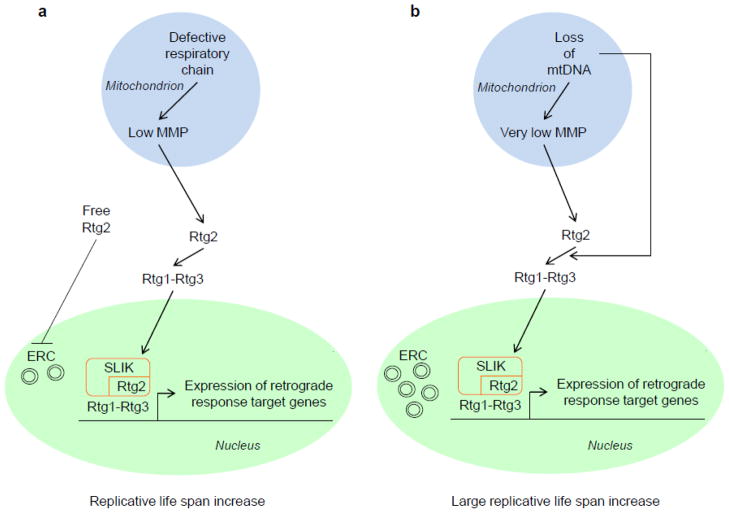Fig. 4.
Cellular response to retrograde signaling from the mitochondrion to the nucleus. (a) Mitochondrial dysfunction associated with respiratory chain defects in the presence of mtDNA (rho+). Localized deficiencies in respiratory chain complexes lead to reduction in mitochondrial membrane potential (MMP). This is the signal that is transduced to the retrograde signaling protein Rtg2, which in turn activates the retrograde transcription factor, a heterodimer of proteins Rtg1 and Rtg3, and results in its translocation to the nucleus where it activates retrograde response target genes. This activation is aided by the co-activator complex SLIK (SAGA-like complex), which contains Rtg2 as an integral component and possesses histone transacetylase activity Free Rtg2 remains available to perform its function to suppress extrachromosomal ribosomal DNA circle (ERC) accumulation. The net effect of the retrograde response is an increase in replicative life span. (b) Mitochondrial dysfunction associated with the loss of mtDNA (rho0). Loss of mtDNA leads to pervasive defects that result in a very low MMP. This engages the available pool of Rtg2 in retrograde signaling, leaving insufficient amounts of the protein to suppress ERC accumulation. Loss of mtDNA in addition activates Rtg1–Rtg3 in a poorly understood mechanism that by-passes Rtg2. The accumulation of ERC does not prevent the large increase in replicative life span, because the retrograde response includes functions that appear to compensate for their deleterious effects.

